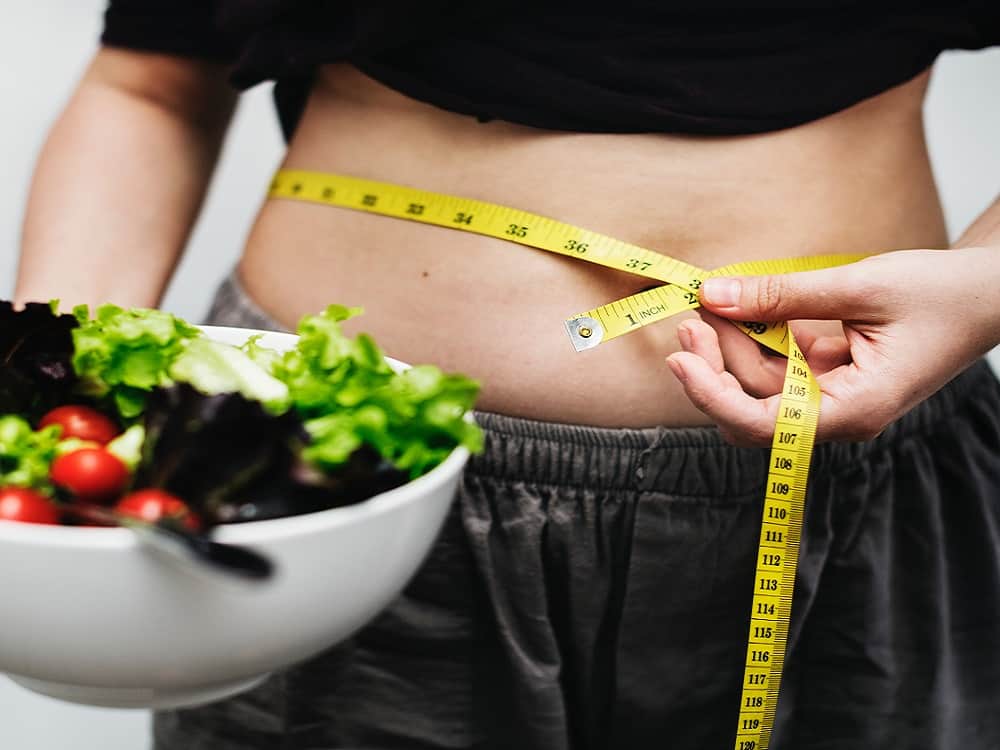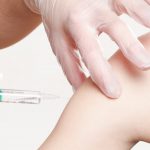A research group from the University of California has discovered that a diet supplemented with seaweed could lessen the huge amounts of greenhouse gases emitted by cows and sheep. Even when small amounts of seaweed were added to the feed, the cows’ methane production was cut by nearly 60%. If researchers figure out how to grow enough of the red algae, an enormous change could be observed in the future.
Globally, between the years 2000 and 2050, the global cattle population is expected to increase from 1.5 billion to 2.6 billion, and the global goat and sheep population from 1.7 billion to 2.7 billion. Each year, livestock production pumps out greenhouse gases with the equivalent effect on global warming as more than 7 gigatons of carbon dioxide. The transportation industry has about the same global impact. Nearly 40% of that is produced during digestion: cattle, goats, and sheep belch and pass methane, a highly potent and short-lived gas.
Several Holstein dairy cows from a barn on the edge of the campus at the University of California, Davis, participated in a study to reduce methane emissions from livestock. If such a reduction could be applied across the worldwide livestock industry, it would eliminate nearly 2 gigatons of those emissions annually. That equals to more than a quarter of the US total climate pollution contribution each year. Ermias Kebreab, an animal science professor at UC Davis who leads the work, has a new goal. He wants to evaluate whether smaller amounts of a more potent form of the seaweed can cut methane emissions even further.
Why does the problem even exist? Cattle and other ruminants have a digestive process known as enteric fermentation. Microbes in their digestive tracts break down and extract energy from the carbohydrates in fibrous grasses. The same process also generates hydrogen, which a separate set of microorganisms feed on, producing methane. Surprisingly, 95% of the gas escapes through the mouth and nostrils, while the rest exits in the other direction.
Until now, researchers have explored many ways to lower livestock emissions such as: selective breeding, vaccines, microbiome transfers, dietary supplements. According to Dan Blaustein-Rejto, senior agriculture analyst with the Breakthrough Institute, they all had varying results.
Very effective results in initial scientific studies introduced a new hope in form of seaweed. In 2014, Australian researchers found that low doses of a red algae, Asparagopsis taxiformis, almost entirely eliminated methane production in lab experiments. Field trials with live sheep cut emissions as much as 80%. The UC Davis experiment, the first in live cattle, showed a 58% reduction on average when a seaweed made up 1% of their diet.
In 2016, California passed a law that called for a reduction in the state’s methane emissions by 40%. Concerned businesses have to find effective and affordable ways of doing so, particularly among the Central Valley’s cattle and dairy farmers. The statute focuses primarily on the related problem of reducing methane from livestock manure. The new law promped Kebreab’s recent work on seaweed.
“As soon as SB-1383 came online, the interest level increased hugely – and it’s concentrated in California,” Kebreab said for MIT Technology Review.
There was one negative side effect in the initial UC Davis study though. The cattle decreased the amount they were consuming each day. Kebreab suspected the issue was salinity of seaweed so they mixed it with molasses to have a better taste.
However, Kebreab is already on a new mission. He intends to use more potent red algae in a six-month experiment with 24 beef cattle. Afterwards, his research team will hopefuly gain additional answers to whether the effect on methane persists at the same level over a longer time period and whether the supplement affects health, weight, and the quality of the meat.
Theoretically, if seaweed blocks methane production, more of the consumed carbohydrates get directed to the task of building tissue. The cattle could grow faster and farmers could see an economic return on the up-front cost of this supplement.
Some businesses have begun to explore what could become the biggest challenge to implementing the novel solution – growing the seaweed on a massive scale. They need 200 kilograms of it for the study alone. Australis Aquaculture, a producer of ocean-farmed Asian sea bass is attempting to find a way through a research project in Vietnam, dubbed Greener Grazing.
The red algae grows naturally in the wild, but it will be a huge challenge to produce it at the speed and scale necessary to serve the global livestock industry. So far, the seaweed has resisted attempts to get it to reproduce, said company’s founder, Josh Goldman. If Greener Grazing solves that problem, the company will attempt to grow seaweed off the coast of Vietnam. The algae would be placed within a type of plastic tube netting used to grow oysters and suspended a few feet underwater.
DSM, the giant Dutch conglomerate, is working on another solution. Their researchers have developed a synthetic additive for the cows. The study noted that a methane inhibitor known as 3-nitrooxypropanol (3NOP) could cut emissions by 30% in lactating Holsteins. Milk production wasn’t affected during the 12-week experiment. They observed another positive side to the “spared methane energy”. It helped generate tissue resulting in higher body weights.
Even those reductions are not as dramatic as those seen in tests with seaweed. A large company with existing manufacturing plants and distribution channels could potentially scale up production faster and drive down costs further than the aquaculture approach, Kebreab added. He also mentioned that venture capitalists have been visiting the campus to learn more about the research and opportunities ahead.
“The more money you have, the quicker we can get it to market,” said Kebreab.
Learn about seaweed practice on a dairy farm on Prince Edward Island, Canada:
Watch the report about Kebreab’s research in the video below:
By Andreja Gregoric, MSc









